
Editor's Note: This story originally appeared on Living on the Cheap.
We always hear that remodeling a kitchen is one of the most expensive home improvements. And it can be.
The Remodeling 2021 Cost vs. Value Report listed the average cost of a major kitchen remodel at $75,571, and even a minor remodel came in at $26,214.
But kitchen remodeling doesn’t have to be that expensive. I’ve remodeled five kitchens, using granite counters and stainless steel appliances, for much less.
Keep reading for 20 tips for remodeling your kitchen on a budget and sticking to it.
1. Shop early

You can get great deals on kitchen fixtures, sinks, tile, handles and pulls and even cabinets online. But you need to shop early enough to allow for delivery and, in some cases, returns and exchanges. Even if you’re shopping locally, expect to have to wait for tile, cabinets, countertops and other materials to be delivered.
Craigslist, Facebook and eBay could yield some bargains if you have time to wait for the right items to show up. Shopping for appliances before your remodel is smart because your appliances could affect some construction choices. “I love Overstock or Amazon for getting the look you want for less,” says Toni Anderson, who has remodeled three kitchens and chronicled some of her remodeling adventures on The Happy Housewife.
2. Resist being dazzled in the showroom

When you go to shop for granite or stone for countertops, tile for backsplashes and floors or even appliances, you are bound to be drawn to materials that are significantly more expensive than what you have budgeted. Be prepared to resist temptation.
“I think people can get sucked in by the bells and whistles, and you have to really stick to your budget on those items,” Patterson says. “If you have a clear vision of what really calls to you before you go to shop, you’re not going to get sucked in by all the bells and whistles.”
If there is a look you want, see if there is a cheaper way to get it. Subway tile and glass tile, for example, are available at many price points, as are granite, marble and porcelain floor tile.
Custom-made, solid-wood cabinets with a premium finish and decorative molding can easily cost $1,200 or more per linear foot, which is the way cabinets are normally priced. But you can get attractive cabinets at Ikea or even a local shop for a quarter of that cost.
3. Don’t make last-minute changes

Rerouting plumbing or electrical lines is much easier when the walls are open than when they are closed. Changing flooring is much easier before cabinets are installed. Make a plan and stick to it. If you’re thinking about a change, ask how much extra work it will entail and how much it will cost.
4. Be mindful of small things

Drawer pulls may not appear to be a big-budget item. But if you choose pulls that are $10 each, 20 pulls will set you back $200. Cabinet pullouts, lighting fixtures, backsplash tile – all those things can be surprisingly expensive if you’re not a careful shopper.
5. Budget for surprises

It’s rare that you can do a remodeling project without running into unexpected costs. Make sure you have enough of a cushion in your budget that you can pay for emergency plumbing repairs or whatever other ugly surprise is lurking behind your walls or under your floors.
6. Know what look you want before you start interviewing contractors

Drop by local showrooms to see cabinets, countertop options and combinations. This will help you get a sense of costs for different options, too.
7. Sign a detailed contract

It’s important that a contract spell out exactly what’s included, both in parts and labor. If your contractor is going to supply the faucet, specify the brand and model number. Will the cabinets come with trim or handles? Does the new flooring include baseboards?
You want to be very clear going in exactly what the contractor is responsible for and what you’ll have to buy or what work will incur extra charges.
8. Become your own general contractor

Aimee Grove, a communications and marketing specialist in the San Francisco area, and her husband have remodeled two kitchens on a budget. They chose to act as their own contractors, hiring separate painters, marble fabricators and tile installers. They gathered names from a contractor friend and the marble yard, and then asked those companies for bids and references.
Being your own contractor creates more work because you’re screening multiple contractors rather than just one general contractor for the entire project. Plus, you have to be available during the day to supervise, and you have to shop around to find the best price on supplies.
But for someone whose remodel doesn’t include knocking down walls, reconfiguring the layout or dealing with city permits, appointing yourself contractor can be a way to cut costs. “If you have the capabilities to be the general contractor yourself, you can definitely save some money,” says Jason Kloesel, owner of VK Construction and Remodeling in Austin, Texas. However, he adds, he would not recommend this route to people without at least some construction knowledge.
9. Keep your plumbing and gas lines in the same place
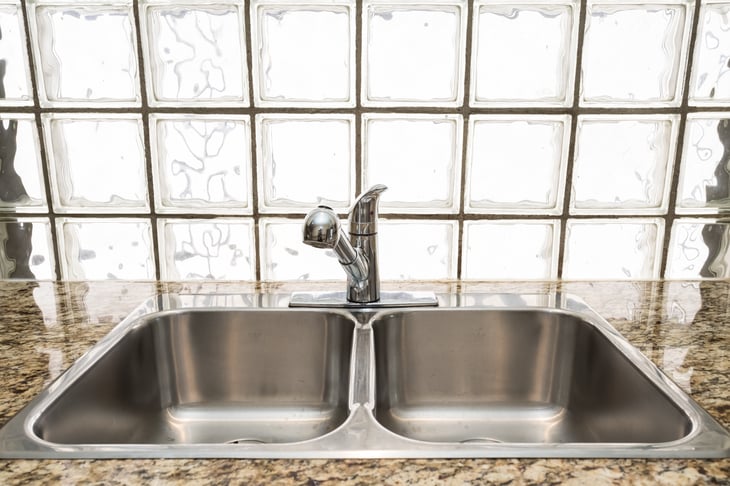
Kitchen remodeling costs more if you knock out walls and relocate plumbing, electricity and gas lines rather than simply replacing old cabinets and appliances. Plus, you don’t know what extra work you’ll reveal when you open walls and floors.
10. Don’t assume big-box stores have the lowest prices

Danielle Colding, who runs Danielle Colding Design and won HGTV’s “Design Star” competition in 2012, says local shops can be an excellent option when remodeling on a budget. A local cabinetmaker, for example, may offer a better deal than the larger competition.
11. Shop around

Explore all options for both labor and materials, from granite to hardware to appliances. Price varies a lot.
Grove found that it really pays to shop around. For example, the price of the marble they wanted varied from $80 to $13 per square foot, and the fabrication quotes ranged from $3,200 to $6,000.
“We went to 10 different marble places until we found the slab we wanted at the right price,” Grove says.
Quotes to paint their cabinets ranged from $1,500 to $7,000. Tile, both for flooring and backsplashes, can run $1 to $15 per square foot. You may find the cabinet hardware you liked most in the store for half the price online.
12. Consider used

Entire kitchens are routinely sold on Craigslist and at the Habitat for Humanity ReStore as well as architectural salvage stores. Hiring a local cabinetmaker to create a piece or two is much cheaper than creating an entire kitchen. “It’s used, obviously, but it’s usually very high-quality,” says Cathie Pliess, design program coordinator for the Art Institute of Fort Lauderdale in Florida.
13. Look for remnants of granite and marble
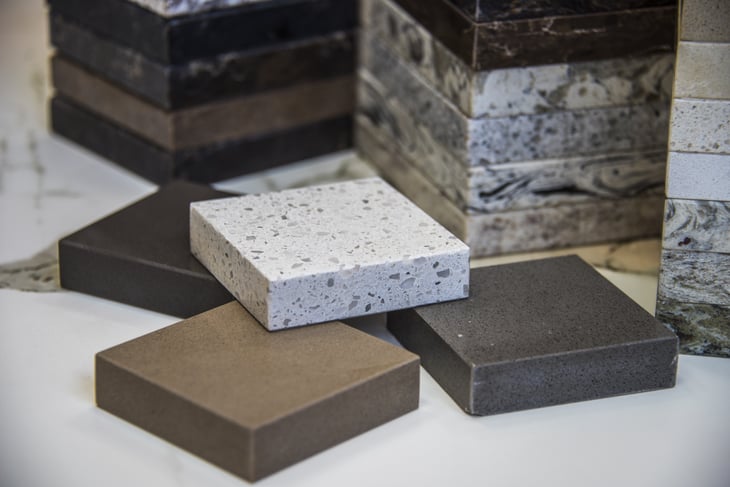
Most fabricators have stone left over from previous jobs, and they’ll often sell it for a fraction of the original cost.
14. Make friends with cabinet shops

Once they’re finished with a display, it is sold at a deep discount. And don’t forget about big-box stores. You can score deals on cabinets by being friendly with them, too.
15. Shop online

Hardware, plumbing and lighting fixtures are all great items to buy online.
16. Don’t skimp on planning

The exact layout of the kitchen and choice of cabinets will make a big difference in how well your kitchen functions.
17. Find out where contractors shop

Many of those stores and fabricators are open to the public. Some offer discounts for bigger purchases, and many sell products that aren’t available in retail stores.
18. Do your due diligence

Check references of any contractors you plan to use, and make sure the contracts spell out who is responsible for buying materials, exactly what materials the contractor is supplying (down to brand and model number) and what the cost will be if you make changes during the job. Cheaper is not necessarily better.
19. Paint when possible
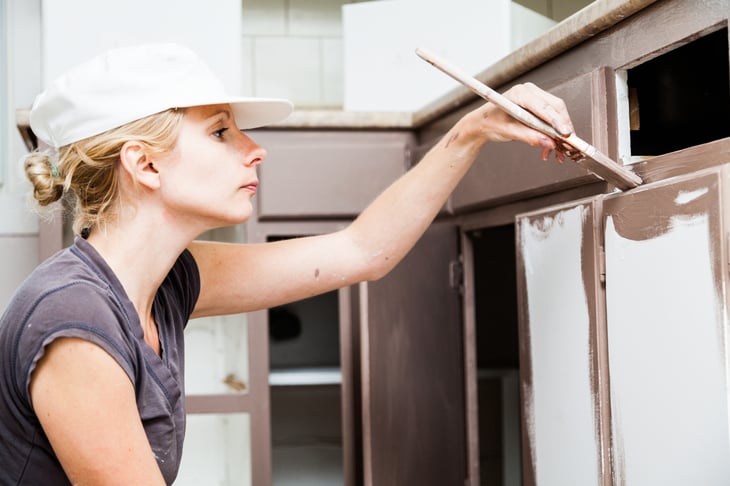
Know that paint is cheaper than stain, and that goes for the labor, too. “People shouldn’t overlook what a difference it makes to paint your cabinets,” Pliess says.
20. Consider alternative materials and designs

You can take the doors off the top cabinets or repurpose old furniture as kitchen storage or to create an island, Pliess suggests. Beadboard creates an attractive, inexpensive backsplash. And you might be surprised at today’s laminate countertops. “Laminate has come a really long way,” Pliess says. “It doesn’t have that ugly laminate look anymore.”
Budget, midrange and splurge kitchen options
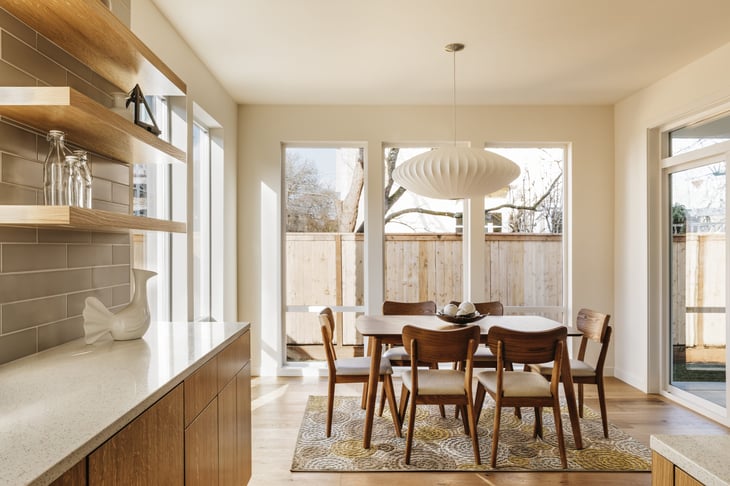
Now, let’s look at some tips for getting the look you want in your new kitchen at various price points. Since prices vary considerably by region, any figures included here are ballpark estimates.
Layout

One way to save on your kitchen remodeling project is to use the same layout. If you move gas, plumbing or electric, that significantly adds to the cost. Removing walls that aren’t load-bearing isn’t terribly expensive, but as you tear down the wall, you will often discover wiring or plumbing that needs to be relocated. Removing walls may also create a situation in which flooring has to be replaced.
- Budget: Retain the current layout.
- Midrange: Take out a wall, but keep the stove, dishwasher and sink in the same place. (The refrigerator uses a regular outlet so it’s easier to move.)
- Splurge: Knock out whatever walls you want to design an entirely new layout, perhaps creating a great room with an island.
Cabinets
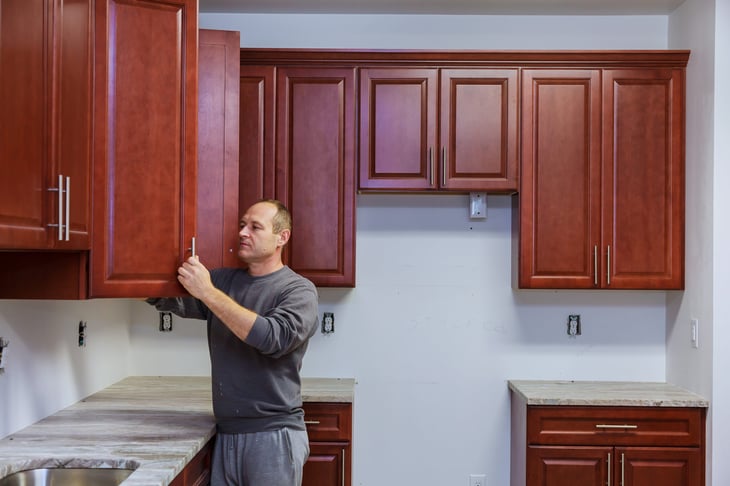
New kitchen cabinets account for a significant chunk of your remodeling budget, and cabinet prices can vary considerably depending upon what you buy and where you buy it. Stock cabinets from a big-box store are often cheapest (unless you can find used cabinets). Factors that influence cost include materials (fiberboard vs. plywood vs. hardwood) as well as interior pullouts and glazes, such as decorative coatings over the wood. Get prices from local shops as well as big-box stores and online because you’ll likely encounter a range of prices for what is essentially the same cabinet.
- Budget: Repaint or refinish existing cabinets.
- Midrange: New basic plywood cabinets with real wood or laminate doors.
- Splurge: Solid wood cabinets with a custom glaze and molding, plus lots of pullout drawers and other features.
Countertops
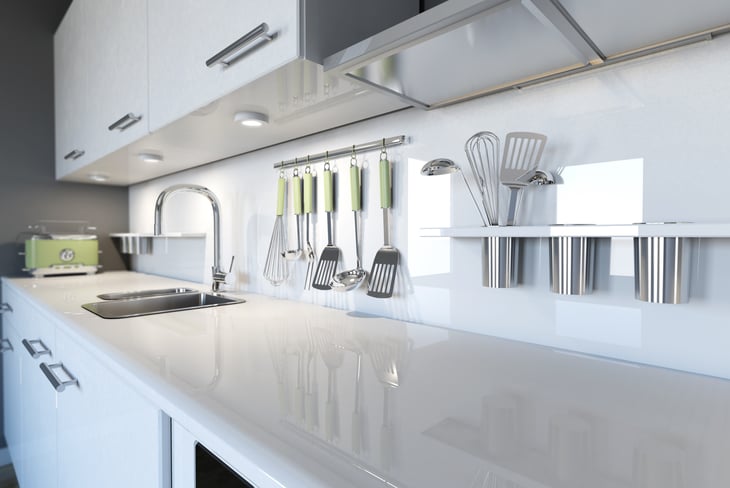
Like cabinets, countertops can vary widely in price based on materials. There is even a lot of variation in price even among the same materials. Granite, for example, can be $50 per square foot for a common stone but more than twice as much for a rarer color. The thickness of the granite as well as the edging you choose also affects price. Granite tile is significantly cheaper, usually under $10 per square foot installed. Granite is usually priced for the entire job, but be aware that the cost of fabrication can vary as well.
- Budget: Laminate, tile, butcher block or granite tile.
- Midrange: Granite chosen from the less expensive slabs or solid-surface such as Corian.
- Splurge: Marble, quartz or rare granite.
Accessories
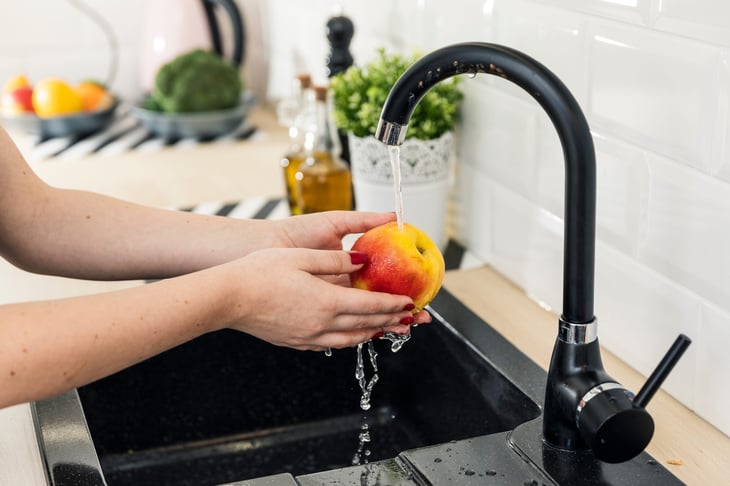
Handles for cabinets can cost you $10 apiece, and you can spend $100 or $1,000 on a faucet. This is where savvy shopping can really cut costs, including shopping online. Your choice of materials in this case may be less important than where you buy them. You should start shopping for fixtures as soon as you decide you are going to remodel. In most cases, you’ll save money if you buy these items yourself rather than have a contractor supply them, but you should ask your contractor where he shops.
- Budget: Check online sites, the Habitat ReStore and the clearance sections of big-box stores.
- Midrange: Order online or look for items on sale.
- Splurge: Rush to the specialty store the day before you need the items, and pay full price for whatever is in stock.
Appliances

People love professional appliances, but before you spend the money, consider how you will use the kitchen. Do you cook a lot? Do you enjoy baking? If not, don’t splurge on high-priced appliances. And remember that even the best cooks can do quite well with basic appliances.
If you know you’re going to be replacing appliances, start shopping early and jump on sales, clearances and friends selling perfectly good used appliances. It’s smart to buy appliances before you start remodeling your kitchen, so that the cabinets can be built to fit around them. Stoves and dishwashers are standard sizes (though high-end stoves can be larger) but refrigerators have some variation in width, height and depth.
- Budget: Use your old appliances or buy used appliances.
- Midrange: White appliances from Frigidaire, Whirlpool or GE. If you must have stainless steel, however, it’s not significantly more expensive. They don’t all have to be the same brand.
- Splurge: Professional-grade appliances from Wolf, Viking, Thermador and other elite brands.







Add a Comment
Our Policy: We welcome relevant and respectful comments in order to foster healthy and informative discussions. All other comments may be removed. Comments with links are automatically held for moderation.